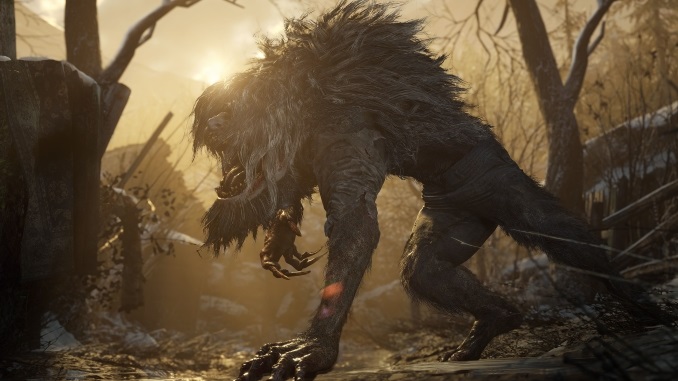In Susan Sontag’s Notes on “Camp”, she writes “the whole point of Camp is to dethrone the serious.” That isn’t to say that something that is serious can’t be camp, but camp as an aesthetic style eschews seriousness for the sake of it; it revels in exaggeration, insincerity, passion, and even cliche. In this way, it avoids the dogmatic nature of “taste,” which, in the world of gaming, has come to symbolize an inarguable list of games that tick all the boxes: polished gameplay, beautiful graphics, seamless performance, and a “cinematic” story. Think of all the “good taste” videogames and you’ll notice just how similar they really are: The Last of Us, God of War, Uncharted.
Resident Evil Village is all these things and more. Hyperviolent, silly, and extremely referential, Village is the type of game I dream of—a game that’s engrossing but doesn’t take itself too seriously. It’s not trying to earn its way onto any sort of lists because it knows that the best stories in gaming have already been told. So why not rehash them into a schlocky soup of horror tropes and hot vampire ladies?
Village begins much like any horror movie sequel: Ethan, now a father, struggles to connect with his wife Mia after the events of Resident Evil 7. They have a child now, and live abroad to avoid The Connections and others who would threaten their livelihood. Ethan wants to work through the trauma they faced in Dulvey, but Mia is content with forgetting—and even becomes hostile when Ethan tries to bring it up. Immediately after an unresolved argument, Mia’s filled with countless bullet holes by none other than Chris Redfield, everyone’s favorite boulder-punchingaction hero. Before we ever really learn what’s going on, Ethan’s waking up and crawling out of a transport vessel and hobbling his way to a creepy Slavic village, which he soon learns is being besieged by werewolves.
The game goes to great lengths to instill an ominous atmosphere with an odd undercurrent of lightness—there’s a ton of dread, like in Resident Evil 7’s early moments, but there’s an added layer of goofiness that seriously cuts the tension. I love that. Resident Evil has always been goofy; horror games in general are filled to the brim with cheese and insane situations, from UFOs in Silent Hill to dorky dialogue in Until Dawn. Something about allowing the audience to participate in the horror directly through controlling the game’s central victim creates hilarious moments, intentional or otherwise. I’ll always remember fondly the first time I played Alien: Isolation with a friend and learning the hard way that you aren’t actually safe while crawling in a vent. The comedy of horror, derived from inconsistencies in tone and questionable choices no human would make, is an integral element that’s simply not acknowledged enough. When I remember a horror movie, I should laugh about my naive experience sitting through it. I should be eager to terrify my friends with it, to grin as they jump out of their seats.
Village gave me all that and more. The game’s crowning achievement is by far your first expedition, through Castle Dimitrescu. Besides just titillating Twitter users, Lady Dimitrescu is a damn good villain. For one, she has an impeccable design—fine lines add minor flaws to her otherwise perfect face, and her pallor seems achieved from an abundance of Erno Laszlo powder and her vampiric state of undeath. Castle Dimitrescu is maybe the most fun dungeon I’ve ever been through in a Resident Evil game. My partner, while watching me, described the experience as “like a theme park ride,” and I think that’s exactly why it’s effective; there’s dazzling sights and occasional slow-downs, with simple “put the insignia-emblazoned key item in the corresponding hole” puzzles, but the majority of the experience is a high octane whirlwind of viscera and chase sequences. The area’s climactic final battle even managed to make me enjoy sniping. There’s a gothy Universal Monsters vibe that’ll remind people of Castlevania and Bloodborne, but everything here’s quintessentially Resident Evil. It’s like the Spencer Mansion reimagined.

The area’s replete with exactly what makes Resident Evil work, and thankfully, the game follows up on it with less intense but equally exciting segments. The eponymous village is more of a labyrinth that you’ll come back to again and again between sections to uncover new weapons, gear, and treasures. It serves to showcase the strength of the game’s level design; it’s always exciting to finish an area and come back to the central hub, where new baddies lurk the streets. The design is beautiful, too. All the immersive little details from the Baker ranch are here, but divided across several houses, barns, and churches to give the sense of a deep cultural background.
The other sections have their own distinct identity, too, and dabble with other genres of horror. The game toys with psychological horror, body horror, supernatural encounters, and typical Resident Evil gross-out moments. While it’s certainly the least putrid Resident Evil to date, it’s got its fair share of filth. The game actually benefits from running the gamut of what horror can be; you’re never in a place long enough for the tropes and stock moments to feel tired, and it’s always exciting to make your way to the next zone. The game goes to great lengths to strip you of your power and make you feel intensely vulnerable, and doesn’t just rehash the same “shoot to kill” sort of boss fights that are so common in Resident Evil. Donna, the game’s token creepy dollmaker, is a shining example of this. Without saying too much, her section is one of the game’s more inspired moments: it’s strange, brief, intense, and more than a little melodramatic. It’s a lot more Clock Tower than the series is usually willing to go.
Unfortunately, for all its great moments, the game buckles to tell its story without relying on the same old tricks. Around the game’s climax, the stakes raise to such impossible heights that we’re left with typical action movie beats. The game is perhaps too afraid to truly eschew the Resident Evil formula—RE7 was the same, for all we talk about it as the franchise’s much needed shake-up. With the introduction of hand grenades and assault rifles, the game’s sumptuous tone, rife ornate filigreed hallways and extravagant pagan iconography, is crushed like a rare jewel. It’s disappointing, but not all that surprising that Capcom would rely on what they do best: insane, huge encounters complete with a healthy dose of Tom Clancy.
I also can’t discuss the game honestly without noting what made me uncomfortable. Ethan, as a character, is still just as stale as in RE7. I never had an issue with him in his original appearance because the game didn’t require a modelesque supersoldier like Leon or Jill. But Village seems to want to canonize Ethan in much the same ways as those characters, which is an immensely hard sell. While I enjoy the Ethan duology for what they are—bolder, smaller stories that lack some of the bombast of earlier titles—I can’t say I enjoy them because of Ethan. Ethan’s flaccid one-liners and consistent lack of empathy for the characters around him only further alienates me from him. There’s also no excuses for the Duke, the game’s version of the merchant from Resident Evil 4. The Duke can’t go two lines without mentioning the edifying power of food, and his large belly, which hangs out of his too-tight shirt, seems to deign him just as much an odd freak as a 9 foot vampire and a man that’s half fish. It’s the lamest, cheapest fatphobia I’ve seen in a long time.
For all the game’s problems, though, it provides some truly excellent moments that I’ll remember for a long time. I shouldn’t be shocked that a major AAA game like Village would fall into AAA traps, but there’s something special about Village that felt like it could escape the franchise’s own sordid past and deliver something as revolutionary—if not more—than RE7. But, like all things camp, maybe we’ll reevaluate the game’s banality in a decade or two; Village might be a cult oddity in good time.
Resident Evil Village was developed and published by Capcom. Our review is based on the PlayStation version. It’s available for the PlayStation 5, PlayStation 4, Xbox One, Xbox Series X|S, PC, and Stadia.
Austin Jones is a writer with eclectic media interests. You can chat with him about horror games, electronic music, Joanna Newsom and ‘80s-‘90s anime on Twitter @belfryfire

